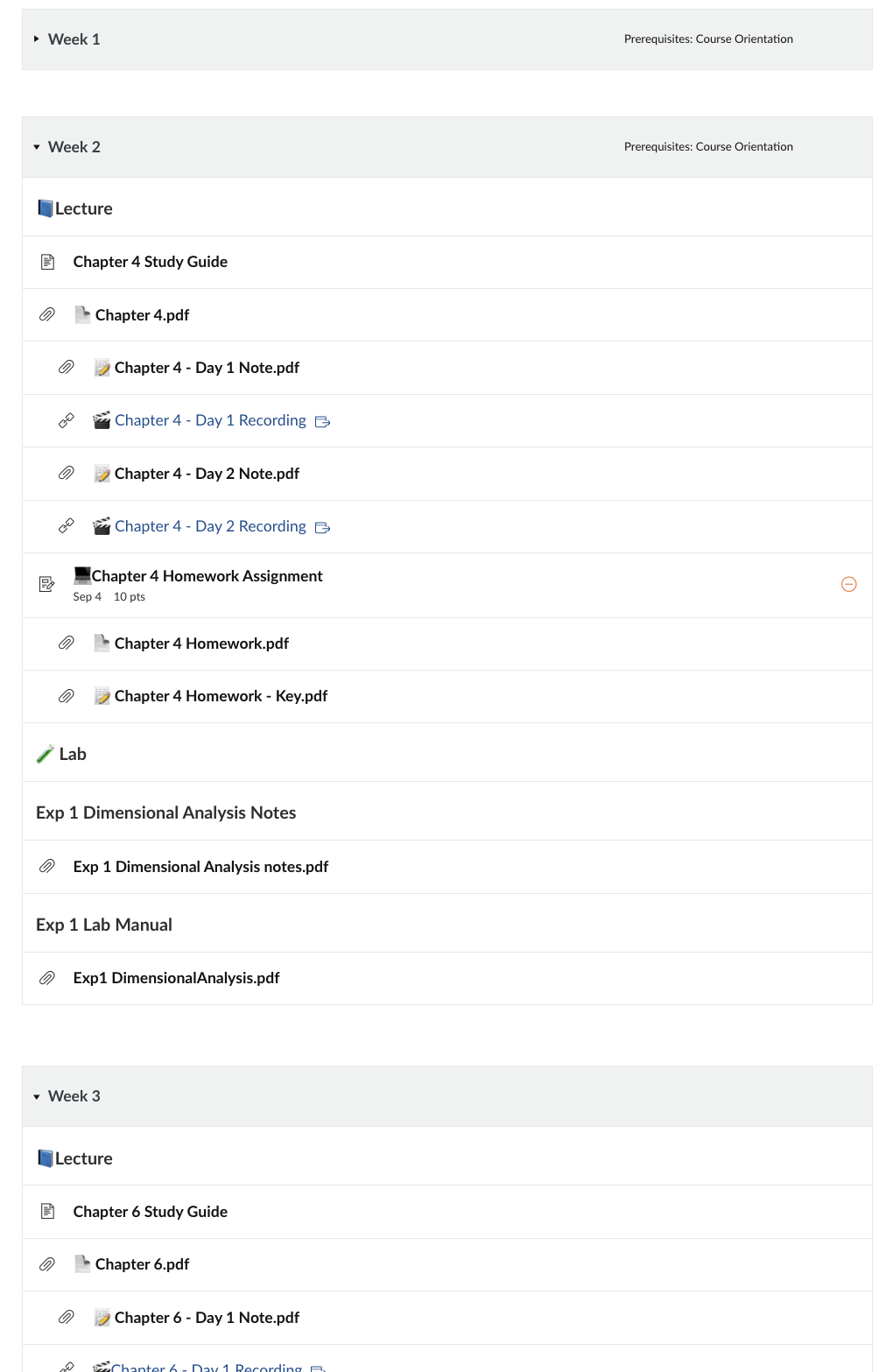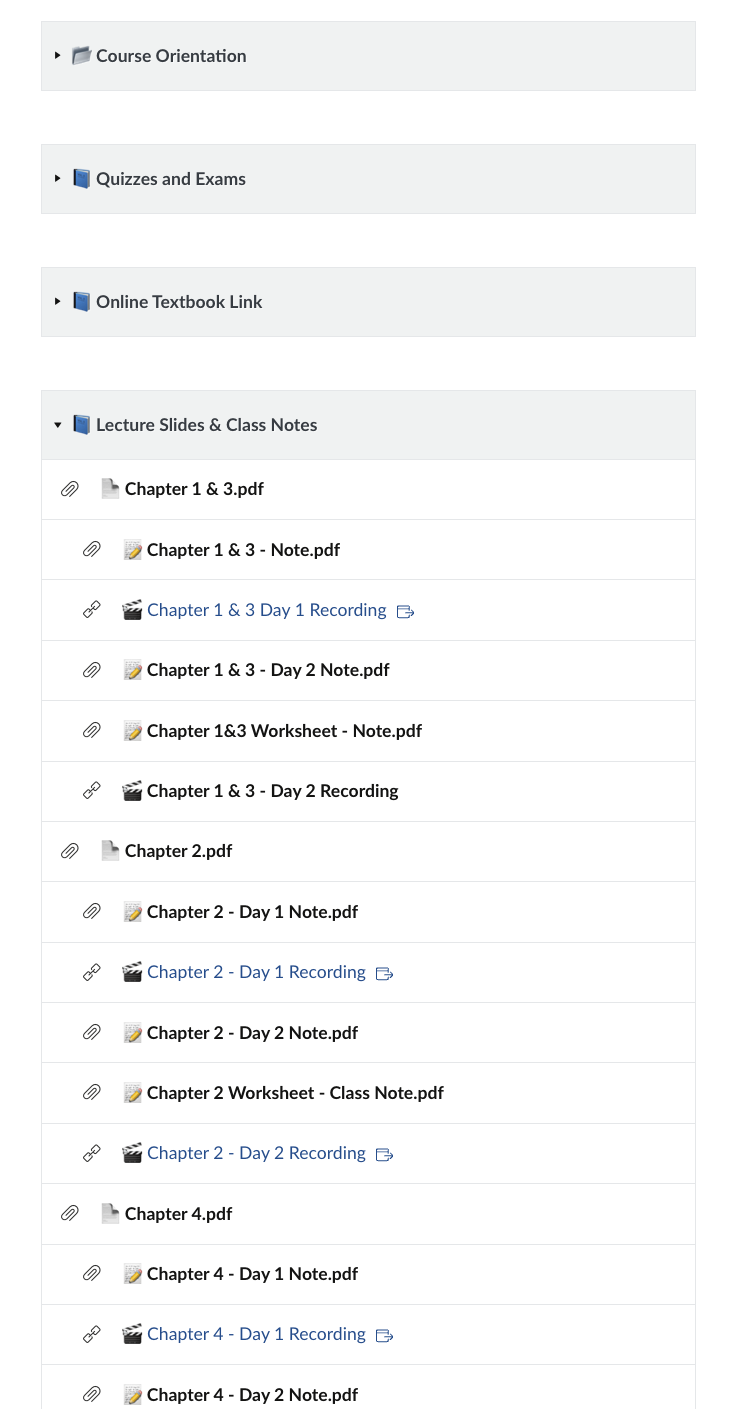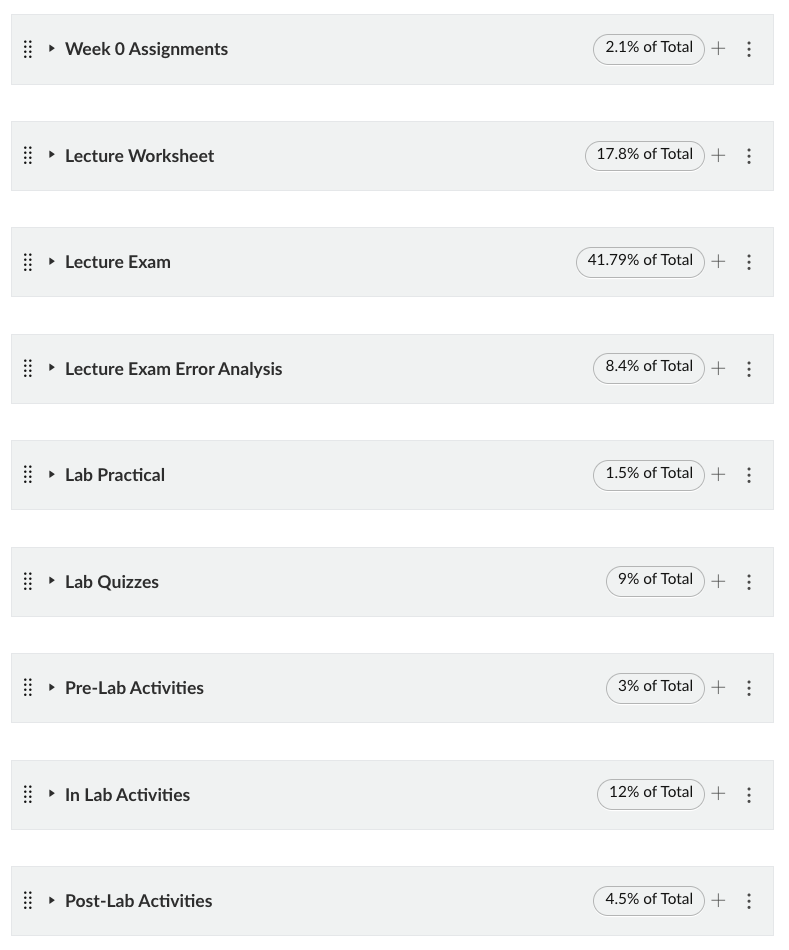Context
Until Summer 2025, lecture and lab sections were completely separate—each instructor managed their own Canvas shell.
Starting in Fall 2025, the courses became linked: each CRN now includes both lecture and lab.
Each lab section has about 23 students, while two lab sections share one combined lecture (≈ 50 students).
I taught both lecture sections, and two colleagues (Antonia Flores and Crystal Serrano) taught the corresponding labs.
This change required coordination, since every instructor had different grading schemes, Canvas setups, and teaching rhythms.
Initiating the Collaboration
I started the conversation early in summer by outlining the structural issues and proposing a shared framework.
We agreed on a 70 : 30 weighting (lecture : lab) consistent with other chemistry courses.
Within those buckets, each instructor could freely decide their own internal category weights—as long as the total followed the 70/30 rule.
To make this work technically in Canvas, I drafted a weighted-category template showing how to apply separate “drop-lowest” rules (e.g., Pre-labs = drop 2 lowest while Exams = no drop).
Canvas Structure Planning
I proposed and prototyped two layout options:
- Category-Based Archive – modules organized by type (📘 Lecture / 🧪 Lab / 📂 General Info)
- Week-by-Week Modules – “Week 1, Week 2…” with headings dividing lecture and lab inside each module
We decided both could be used, as long as module titles followed a consistent “Week N” format and used shared icons and banners.
I created the shared thumbnails, banner set, and icon guide, and built the first draft Canvas shell so others could duplicate it easily.


Course Content Alignment
I met with Crystal to compare lecture chapter coverage, exam ranges, and pacing to prevent mid-semester misalignment.
I also merged syllabi formats across all sections for consistent layout and grading explanations.
When formatting issues arose (photo wrapping, font inconsistencies, etc.), I handled direct fixes or walkthroughs on Canvas.
Outcomes
- Unified grading logic (students can clearly track how lecture and lab grades combine)
- Standardized visual and structural design across Canvas shells
- Reduced confusion for students and smoother communication among instructors
- Preserved autonomy within shared boundaries—each instructor kept their preferred quiz, lab, or assignment style
Reflection
This collaboration required initiating the dialogue, setting technical parameters, and translating abstract agreement into tangible Canvas design.
It was an exercise in leading coordination under time pressure—pre-building templates and visuals helped the team make faster, concrete decisions.
Next semester, I plan to formalize these agreements into a short checklist and a shared “Grade Math” slide for students, ensuring transparency and continuity across all linked sections.
